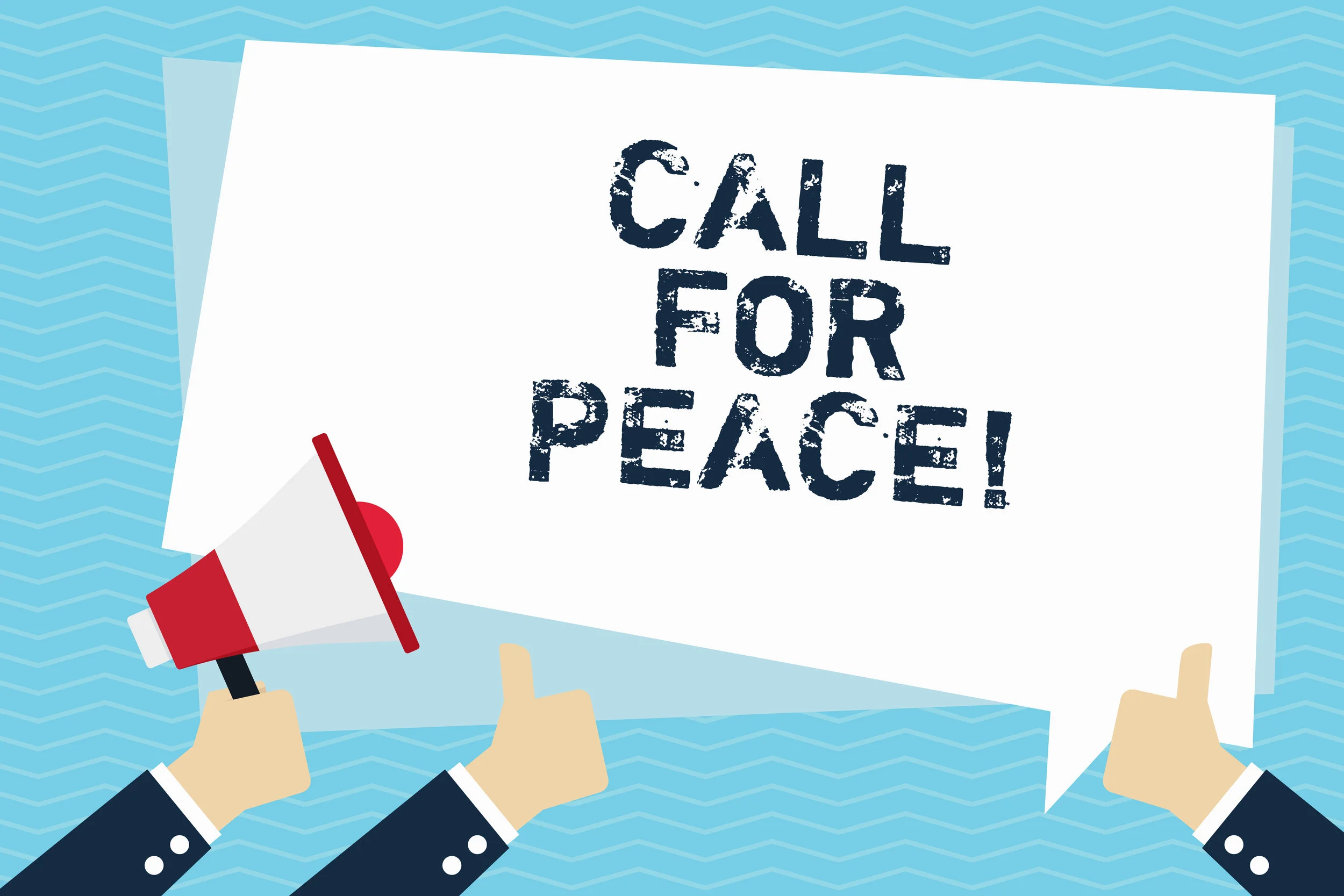From the President
Bruce Knotts, October 28, 2019
Welcome to the renewed Disarmament Times. The Committee is very glad to be able to publish it again. New attitudes, events and approaches make the reappearance of the Times especially needed and important now.
At the United Nations it is now clear that disarmament and other core issues are inseparable. The UN has demonstrated this in actions on the Sustainable Development Goals, human rights, efforts to end conflicts, peacekeeping forces. and the existenial threat to the Earth from climate change. The relation to climate change and the sustainable development goals is both financial and intrinsic. Nations such as the United States, Russia and China are spending trillions of dollars to upgrade their nuclear arsenals. This money is being spent on weapons that it would be suicide to use. In other words, we are spending trillions of dollars on weapons we dare not use and not spending those funds on addressing climate change and the rest of the Global Goals. Also, there is always the temptation to use weapons on which so much treasure has been spent. President Trump has said, “If we have nuclear weapons why don’t we use them.” The temptation is to use what’s called small tactical nuclear weapons. Climate experts affirm that even a small exchange of nuclear weapons could produce catastrophic results to an already fragile climate system. The Secretary-General, the High Commissioner for Human Rights, other senior UN officials and national delegations have emphasized this aspect of disarmament in recent speeches.
Recognition at the UN that disarmament and these issues are joined has also begun to offer a way out from the slow progress on disarmament at the United Nations in the last few years. It is relatively easy for the major nuclear powers to refuse to discuss disarmament alone at the UN, but harder for them to stay out of negotiations there on issues such as conflict resolution which require attention to disarmament.
We all know that disarmament outside the UN is in trouble. Longstanding treaties such as the INF have been allowed to lapse or are likely to soon. Military build-ups in the US, Russia, China and other countries have speeded up. Nuclear proliferation has advanced in North Korea, Iran and Pakistan. Military actions in Yemen, Iraq, Syria and Afghanistan have much increased the spread of conventional weapons. This situation is unlikely to improve until there is a change in leadership in some major national players, especially the United States.
The current Disarmament Times will both report on specific disarmament events at the United Nations as well as provide succinct briefs by experts on particular disarmament subjects. It will especially focus on nuclear disarmament. This and climate change are the two greatest threats to the future of the world.
The new Times will appear quarterly in October, January, April and July. Please give us your criticisms, comments and suggestions as we publish these editions.
“The revival of Disarmament Times could not be more timely. The world is in a contradictory period about nuclear arms.”
— John Burroughs
There are positive trends in the development of international law about them, but also profoundly negative ones, above all the dismantlement of existing arms control measures. Going forward, Disarmament Times can shed light on these opposing trends, and point in promising directions. It can draw on its proximity to the United Nations, where the issues are robustly debated if only rarely definitively resolved. Nonetheless, the UN has recently had several important developments about disarmament.
On the positive side, in July 2017 122 states adopted the Treaty on the Prohibition of Nuclear Weapons at the United Nations. It is reasonable to expect that it will enter into force in the next year or two since 32 states have ratified the treaty of the 50 required for entry into force.
The nuclear-armed states and their allies have resolutely refused to support the treaty. However, the significance of the treaty lies not only in its near-term impact on the policies of those states, which appears likely to be minimal. It is a resounding declaration – heard beyond the halls of the United Nations - of the determination of a majority of the world’s states to proceed to the complete global elimination of nuclear weapons. Its preamble is a marvelous statement of the prudential, moral, and legal standards that ban the use of nuclear arms and require their abolition. For this reason alone, the treaty is a significant contribution to the reinforcement and development of international law about nuclear weapons.
Another, less noticed, positive development came through actions about human rights. The Human Rights Committee is a body established by the International Covenant on Civil and Political Rights (ICCPR). It is composed of independent experts, including several from states possessing nuclear weapons. The Covenant is a major human rights treaty with broad participation. All nuclear-armed states except China are states parties, and China has signed. Its Article 6 guarantees the right to life, a fundamental human right to be observed, per Article 4, in all circumstances, even in time of public emergency.
On October 30, 2018, the Committee adopted a General Comment on the right to life set out in the ICCPR. Paragraph 66 of the comment begins: “The threat or use of weapons of mass destruction, in particular nuclear weapons, which are indiscriminate in effect and are of a nature to cause destruction of human life on a catastrophic scale, is incompatible with respect for the right to life and may amount to a crime under international law.” It also declares that states parties to the ICCPR must respect their obligation “to pursue in good faith negotiations in order to achieve the aim of nuclear disarmament under strict and effective international control.”
This General Comment represents real progress in the decades-long development of accepted standards and values against nuclear arms. The comment finds that threatening to use nuclear weapons as well as actually using them is contrary to the right to life. This condemns menacing language like President Trump’s references to infliction of “fire and fury”. It is human-centered and victim-centered, not state-centered, as expressed by the opening of the UN Charter, “We the peoples of the United Nations”. Moreover, this human rights approach carries the potential for extending the demand for abolition of nuclear arms beyond the sphere of so-called “national security” and the narrow discourse of non-proliferation. In this way, it can link up with demands for progress on protection of the environment and on sustainable development.
Current negative trends in arms control are well known to readers of Disarmament Times. Briefly, under the Trump administration the United States will not ratify the Comprehensive Nuclear-Test-Ban Treaty. Moreover, no progress has been made on the long-promised Fissile Materials Cut-Off Treaty.
Further, under the Trump administration the United States breached the multilateral agreement with Iran, the Joint Comprehensive Plan of Action, despite its integration into a US-championed Security Council resolution. Whether that agreement will survive is very much in question. Also, although it is very important that the Democratic People’s Republic of Korea has suspended nuclear explosive testing and tests of long-range ballistic missiles, nonetheless the talks on denuclearization of the Korean peninsula have gone nowhere so far.
Concerning US-Russian bilateral arms control measures, the United States, followed by Russia, withdrew from the Intermediate-Range Nuclear Forces (INF) Treaty, effective in August 2018. The only remaining treaty limiting US and Russian nuclear forces, New START, which regulates long-range forces, expires in February 2021.Then, pursuant to the treaty’s terms, it could be extended for five years. The United States has not committed to this extension of New START, which Russia supports. While the US occasionally refers to the possibility of a new arms control arrangement, perhaps including China, it appears that no serious effort is underway to reach agreement to extend New START, and/or to replace and build upon the limits established by the INF Treaty and New START.
Meanwhile, Russia and the United States are continuing to acquire upgraded and even new nuclear weapon systems.[1] Furthermore, experts are warning that new and emerging technologies – cyber capabilities, artificial intelligence, hypersonic missiles, and more – pose a high risk of disrupting the current stability of the status of the possession and control of potential and actual nuclear weapons.
What is to be done in this grim landscape?
First, civil society and disarmament supporting states must defend, promote and build upon the precious achievements gained over the decades in international law, most recently the Treaty on the Prohibition of Nuclear Weapons and the UN Human Rights Committee’s comment.
Second, we must look toward coming years and decades and think beyond the current deterioration of arms control. We must take advantage of the reality that it is in the nature of the threat posed by nuclear arms that a state possessing them will seek at least to understand and to limit other states’ nuclear arsenals. Regardless of whether New START is extended, it is imperative that at least Russia, the United States and optimally China negotiate to reduce arms, preferably to very low levels. Above all, we must keep pressing for the global, verified abolition of nuclear arms.
Dr. John Burroughs is Executive Director of the New York City-based Lawyers Committee on Nuclear Policy and a longtime Disarmament Times contributor.

Christopher King
Weapons of Mass Destruction Branch | UN Office of Disarmament Affairs
OCTOBER 17, 2019
On behalf of the United Nations Office for Disarmament Affairs, it is a pleasure to see this publication up and running again and to be tapped to make a contribution to the first edition of its reboot. It is less of a pleasure to describe the circumstances surrounding the disarmament and non-proliferation regime.
Because the current international environment is one riven by divisions, defined by distrust and characterized by a preference for military solutions over diplomacy. We see this not only in the staggering sums being spent on weapons, but also in the so-called modernization campaigns being undertaken by States possessing nuclear weapons. These are, in effect, becoming a qualitative nuclear arms race, while in parallel, dangerous notions about fighting and winning nuclear war are once again prominent.
Since the end of the Cold War, the international community has made steady progress in its goals to ensure nuclear weapons are never used again and to bring about their total elimination. Sadly, that progress appears to have come to a halt.
The international rules-based order, so carefully constructed over the course of seven decades, is under siege and with it the web of instruments and obligations that make up the disarmament and non-proliferation regime. Indeed, elements of the regime are now collapsing, most recently the Intermediate range Nuclear Forces Treaty.
The erosion of the disarmament and non-proliferation regime is evident within the United Nations “disarmament machinery” – the First Committee of the General Assembly, the Conference on Disarmament, and the UN Disarmament Commission. Divisions over the pace and scale of nuclear disarmament have hindered the work of these forums for some time, but now they have devolved into rhetorical slanging matches.
In such an environment, the danger of a nuclear weapon being used either intentionally, by accident or through miscalculation is higher than it has been since the darkest days of the Cold War. But all is not lost. These dangerous trends can be reversed through reinvigorated dialogue and serious negotiations, by rebuilding habits of cooperation and restoring trust and confidence in the implementation of commitments, and via demonstrations of flexibility and a willingness to compromise for the greater good.
It is for these reasons that the Secretary-General launched his agenda for disarmament, Securing Our Common Future, a comprehensive initiative aimed at – inter alia – assisting UN Member States to preserve the norm of the non-use of nuclear weapons and to achieve concrete and irreversible steps in the attainment of the collective goal of a world free of nuclear weapons.
The agenda stresses the responsibility of all States to pursue nuclear disarmament, but also that those States possessing nuclear weapons must lead and demonstrate real progress. It welcomes all efforts to achieve this goal and the need for complementary, rather than competitive, approaches.
Next year, the Treaty on the Non-Proliferation of Nuclear Weapons – often touted not only as the ‘cornerstone’ of the disarmament and non-proliferation regime but also an essential pillar of international security – will celebrate fifty years since its entry into force. The 2020 NPT Review Conference – a five yearly stock take of the Treaty’s implementation and an opportunity to chart its future course – presents both a symbolic and practical opportunity for its many States parties to: 1) reaffirm their commitment to a world free of nuclear weapons; 2) demonstrate implementation of all obligations undertaken to attain this goal; 3) strengthen non-proliferation measures; and 4) return the world to a path that reduces nuclear dangers through practical steps in disarmament.
Of course, as Secretary-General Guterres said, any new vision needs to “preserve our existing frameworks which continue to bring us indispensable benefits” while, at the same time, taking a holistic view of how to address the new challenges of an evolving international context.
Secretary-General Guterres has also been clear that meeting the challenges of today’s complex international environment requires new thinking – it requires a new vision for disarmament, non-proliferation and arms control.
For example, our world is being transformed by an array of disruptive technologies across every aspect of human activity – from transport to healthcare to manufacturing. It is a transformation that will have immense benefits for humanity. Unfortunately, many of these technologies are also dual-use and, unchecked, could pose serious challenges to international peace and security, including potentially increasing prospects for the use of nuclear weapons.
Consequently, any new vision must take into account the potential dangers posed by, for example, information and communication technologies or those associated with artificial intelligence, while in tandem seeking to leverage these technologies for our collective security.
There are also many outstanding issues in disarmament that need to be tackled. Most pressing amongst these is the growing proliferation of missiles and especially ballistic missiles. These weapons are not only capable of being used to deliver nuclear weapons but are increasingly being used in ways that put civilian lives in danger or undermine regional stability and security.
Any new approach must work to correct the false assumption that disarmament and especially nuclear disarmament is a quixotic dream. It is not. Throughout history, disarmament, non-proliferation and arms control have been pursued for many reasons not least for the maintenance of international peace and security, and to prevent and end armed conflict.
Finally, new approaches need new partnerships. Today, there are many actors with a stake in preserving international peace and security and a world free of nuclear weapons. Their voices need to be heard, their expertise needs to be accounted for, and the international tent needs to be widened to include them.
Civil society has for decades been a leading voice in the cause of nuclear disarmament. This is not only because of their passionate activism but also because of the technical expertise and creative thinking they bring to the table. Those skills are needed now more than ever.
However, civil society – including the readers of this publication – are the believers. More effort should be exerted to convert the non-believers. Education, particularly aimed at new generations of peacemakers, is needed, primarily to convince them that the issue of nuclear disarmament affects them, and that it is a cause in which they can play a role.
Just as climate change does, nuclear weapons pose a potentially existential threat to our planet. And just as with climate change, we can act to prevent this, but we must act now.

